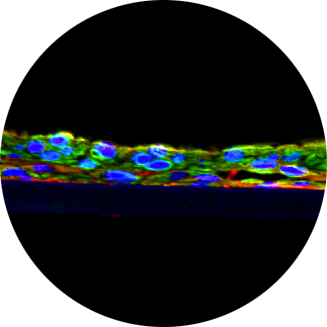Assessment of Carbon Nanotubes on Barrier Function, Ciliary Beating Frequency and Cytokine Release in In Vitro Models of the Respiratory Tract
- TR Number: 1020
- Authors: Claudia Meindl, Markus Absenger-Novak, Ramona Jeitler, Eva Roblegg, and Eleonore Fröhlich
- Materials Tested: carbon nanotubes, CNT4003 nanoparticles, carbon nanotubes, CNT4003 nanoparticles, lipopolysaccharide (LPS), propranolol
- Link to PDF: https://www.mdpi.com/2079-4991/13/4/682
The exposure to inhaled carbon nanotubes (CNT) may have adverse effects on workers upon chronic exposure. In order to assess the toxicity of inhaled nanoparticles in a physiologically relevant manner, an air–liquid interface culture of mono and cocultures of respiratory cells and assessment in reconstructed bronchial and alveolar tissues was used. The effect of CNT4003 reference particles applied in simulated lung fluid was studied in bronchial (Calu-3 cells, EpiAirway™ and MucilAir™ tissues) and alveolar (A549 +/−THP-1 and EpiAlveolar™ +/−THP-1) models. Cytotoxicity, transepithelial electrical resistance, interleukin 6 and 8 secretion, mucociliary clearance and ciliary beating frequency were used as readout parameters. With the exception of increased secretion of interleukin 6 in the EpiAlveolar™ tissues, no adverse effects of CNT4003 particles, applied at doses corresponding to the maximum estimated lifetime exposure of workers, in the bronchial and alveolar models were noted, suggesting no marked differences between the models. Since the doses for whole-life exposure were applied over a shorter time, it is not clear if the interleukin 6 increase in the EpiAlveolar™ tissues has physiological relevance.

